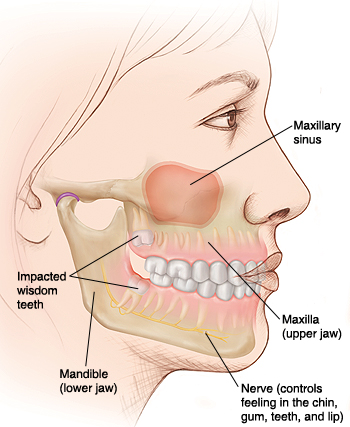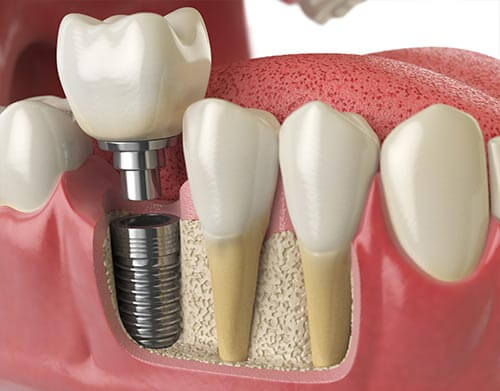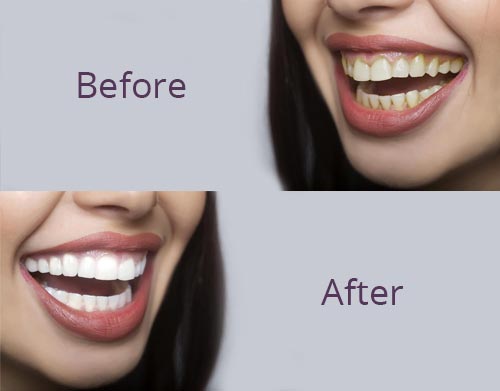Dental Library
Welcome to our health education library. The information shared below is provided to you as an educational and informational source only and is not intended to replace a medical examination or consultation, or medical advice given to you by a physician or medical professional.
Understanding Wisdom Teeth
Wisdom teeth are very much like your other permanent teeth.�The main difference is that they are the last to develop and grow in (when you're "older and wiser"). Most people have four wisdom teeth, one in each corner of the mouth. Some people naturally lack one or more of their wisdom teeth.

Wisdom Teeth and Your Dental Anatomy
There are several types of teeth. Each type is designed either for biting�or for chewing. The wisdom teeth are molars, or chewing teeth. Both the upper and lower jaws have three molars on each side. The wisdom teeth are the last in line, which is why they're called "third molars." Because there are eight other molars to do the chewing, most people can get along fine without wisdom teeth.
Anatomy of a Tooth
The crown is the part of the tooth that has a hard chewing surface. Below the gumline, the root anchors the tooth to the bone. Nerves and blood vessels enter and exit the tooth through the roots.
How Wisdom Teeth Develop
All teeth form within the jawbones. As the roots grow, the�tooth's crown gradually pushes toward the gum until it erupts (breaks through the gum). After a tooth has erupted, the roots continue to lengthen. It takes years for the roots to develop completely. The jawbones become denser and more rigid over time.
-
Around age 9, wisdom�teeth start to form inside the jawbones. The jawbones have a lot more growing to do, so they are not yet at their full density.
-
By the late teens, wisdom teeth roots have developed and are�lengthening. The crown of each wisdom tooth may begin to erupt.
-
By the early 20s, each wisdom tooth has�erupted or is impacted (unable to fully erupt). The roots may still be forming. The jawbones have finished growing.
-
By about age 40, the roots of the wisdom teeth are solidly anchored in the�bone. The jawbones have reached their adult density.
Date Last Reviewed:
Date Last Modified:
When you need exceptional and comprehensive smile care, trust Lebowitz Dental Associates. Learn more about our money-saving deals. Call us today at 602.264.2905 or fill out our online Request an Appointment form to schedule your consultation with us.
Our Services
Fangs for Friends
The purpose of Fangs for Friends is to instill confidence in the community through oral health. We believe that by aiding people to develop confidence in their smile, we can help individuals make their own impact in the community.
Click Here to learn about Fangs for Friends.























